Flax is a flowering plant that has been an important crop for hundreds of years. The seeds from the flowers are used for oil, fabrics such as cloth, as well as the countless health benefits of flax flowers. Alongside the myriad of benefits, flax flowers make for beautiful additions to a garden.
Flax flowers are popularly known for their beautiful blue coloring and simple structure, so it makes sense why they so often appear in flower beds and floral arrangements.
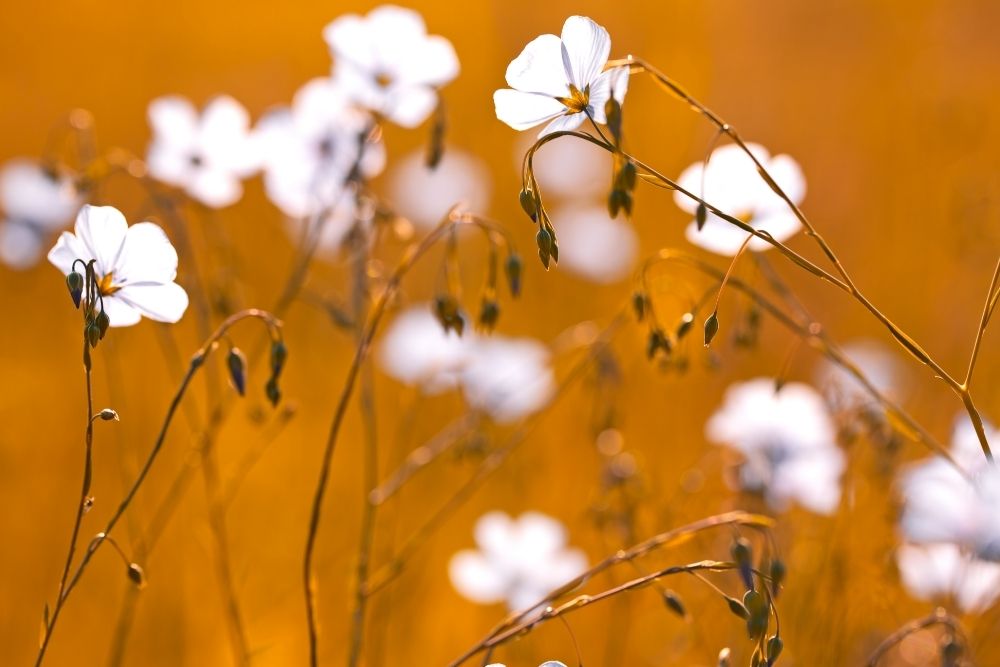
Interestingly, there is more than one type of flax flower out there – not to mention the number of flowers that mimic the same color or structure as a flax flower.
Whether you want to learn about every flax flower or if you want to add a splash of blue to your garden, here is our list of flax flowers!
Linum Perenne
Also known as the blue flax or lint, linum perenne is a perennial flower native to Europe, appearing most locally in England. This is an introduced species that can be found in woodlands and mountain ridges in North America.

In terms of appearance, linum perenne can grow up to 90 centimeters tall and features pale blue flowers on single stems.
The flowers consist of 5 rounded petals and a yellow center. Uncooked, the seeds of this flax flower are toxic, but the cooked seeds are safe for consumption. The stem is used to make strong fibers and the roots make healthy infusions.
Appar Blue Flax (Linum Perenne Appar)
The appar blue flax is one of the two varieties of linum perenne. This is essentially a dwarf-sized variety of linum perenne, favored for the delicate yet vibrant smaller blue flowers.
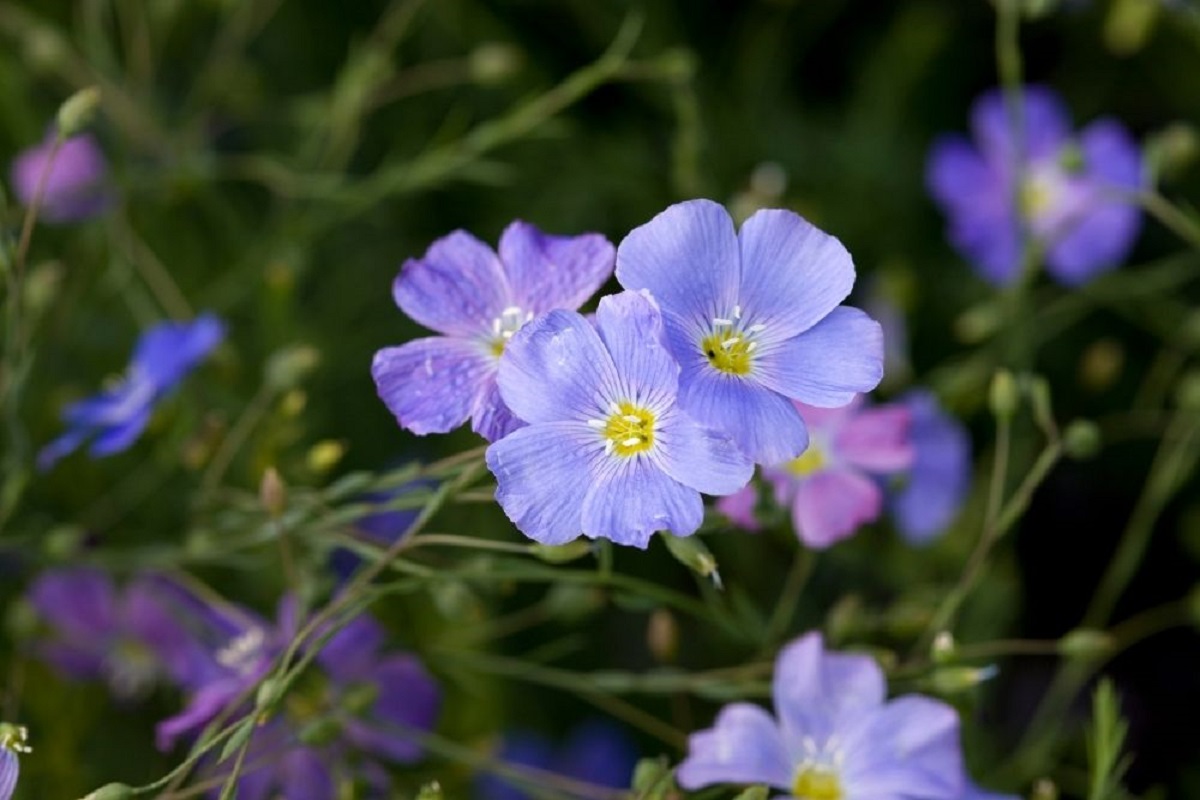
The structure of the flowers are similar to the original, except far smaller and the blue shade is more vivid like a true blue.
Aside from their beauty, the appar blue flax flower is remarkably easy to grow and maintain. They like low-quality soils and dry conditions, and it doesn’t even need to be deadheaded. The dead flower heads will drop when they are ready!
Sapphire Blue Flax (Linum Perenne Sapphire)
The sapphire blue flax is the second linum perenne variety. Thanks to its long bloom time from early spring through to fall, sapphire blue flux flowers are popular for keeping a garden alive and bright for multiple months.
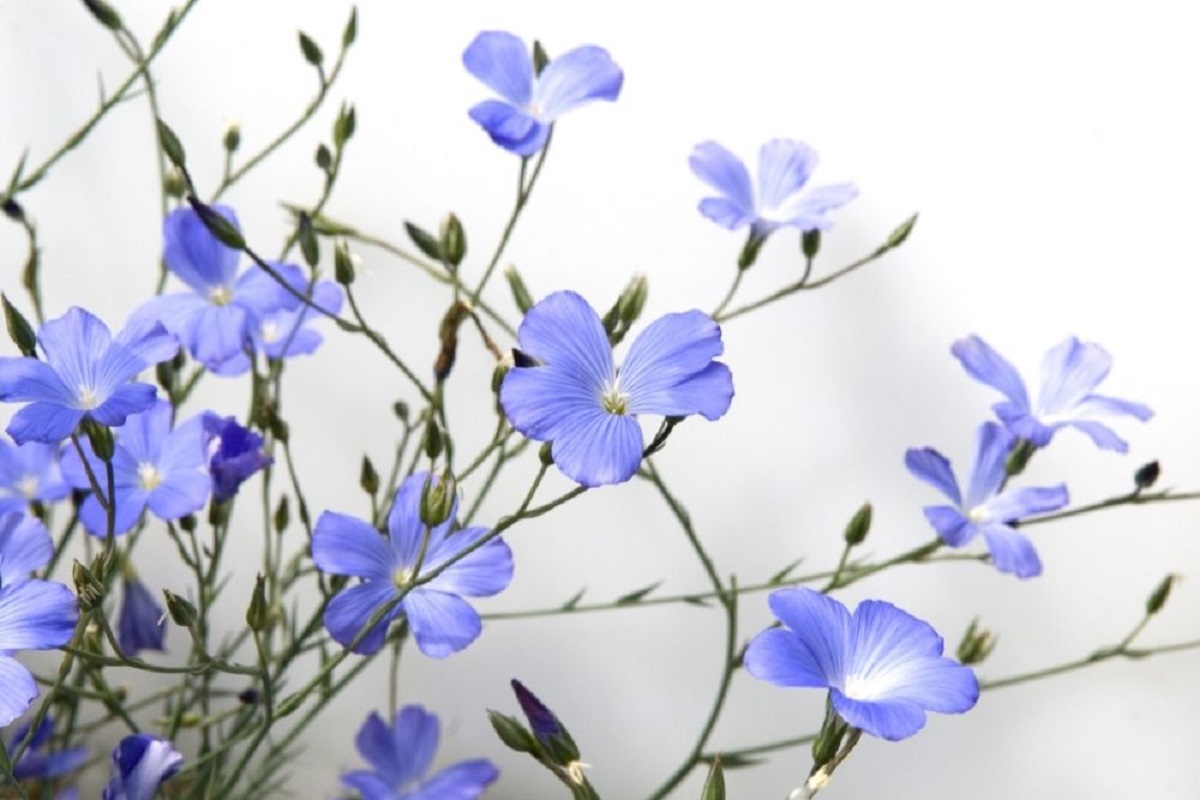
While this isn’t a dwarf-sized variety of linum perenne, it is slightly smaller with heights of 12-15 inches. It also shares the same blue flowers.
Sapphire blue flux flowers are remarkably hardy and easy to grow, with the ability to grow virtually anywhere in North America. They typically prefer sandy soil, and they are resistant to drought and consumption by deer and rabbits.
RELATED: 18 Beautiful True Blue Flowers (Including Pictures)
Linum Narbonense
Also known as the perennial flax or blue flax, linum narbonense is a Europe-native wildflower that typically grows to 1-1.5 feet tall and 1 feet wide. Each stem can grow up to 10 flowers at a time, with each pale blue flower consisting of five round petals.
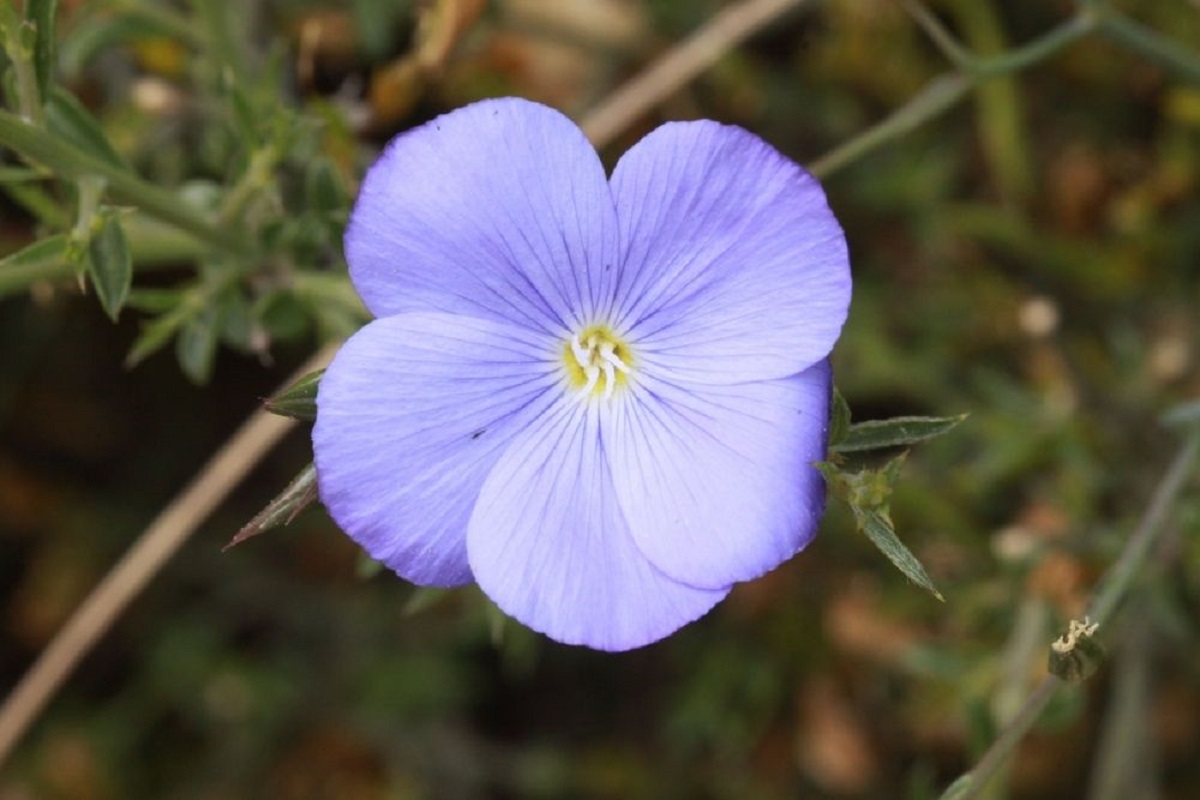
These flowers are showy and fluttery, making for a whimsical addition to a garden.
Unlike most other flax flowers, linum narbonense has whorl-structured grayish-green leaves. They like to grow in full sun in dry and well-drained soil, making them ideal for rock gardens and borders. You’ll know when linum narbonense is happy when they self-seed.
Prairie Flax (Linum Lewisii)
Also known as the Lewis flax (as this species was discovered by Meriwether Lewis, a North American explorer), the prairie flax is a North American native flower found mostly in the west.
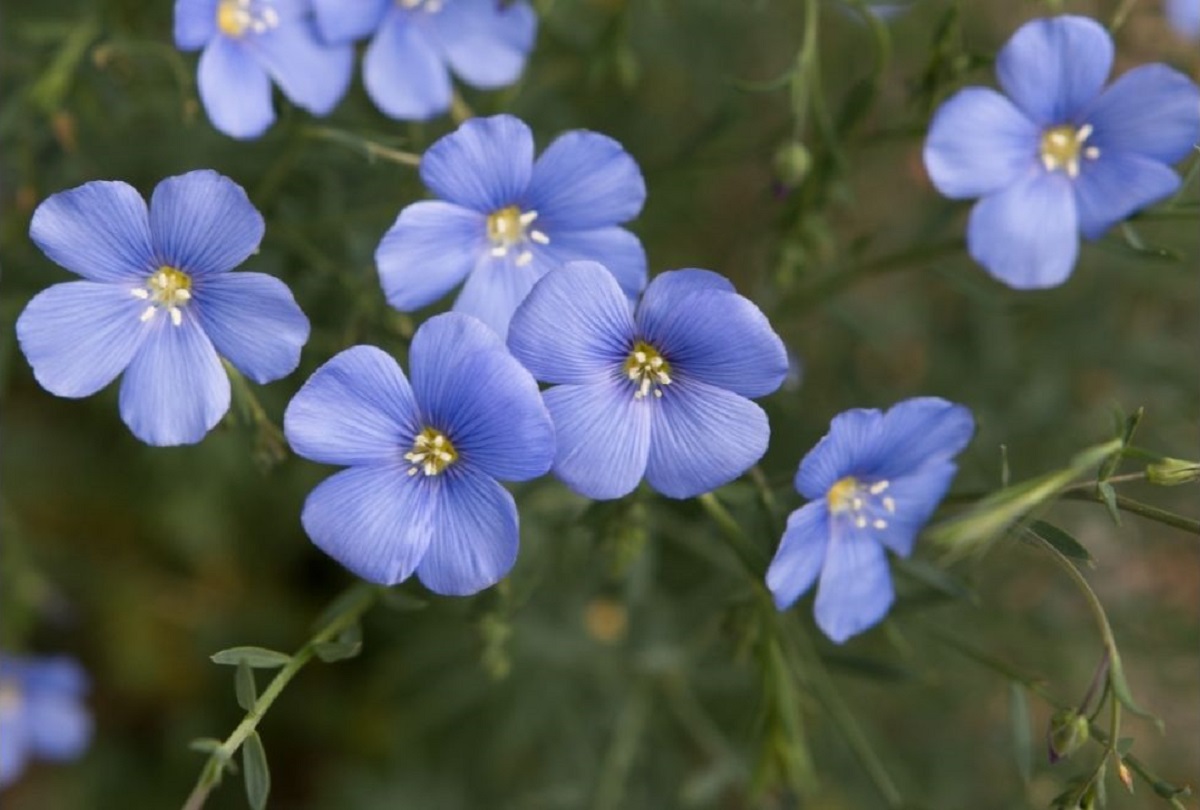
As with most flax species, the prairie flax is hardy and can grow in a variety of environments, including ridges and dry slopes, making it an ideal flower for rock gardens.
Prairie flax flowers are slender and can grow up to 80 cm tall. Due to this height, the stalks are known to bend and curve, which is a nice way to soften a border. It produces five-petaled pale blue flowers with a yellow center and intricate dark blue lines running through each petal.
Alpine Flax (Linum Alpinum)
Alpine flax flowers are compact and most commonly used to fill in the spaces in borders or in rock gardens thanks to its bushy mound-like woody base. They produce very pale blue five-petaled flowers, each with thin lines of dark blue running through them.
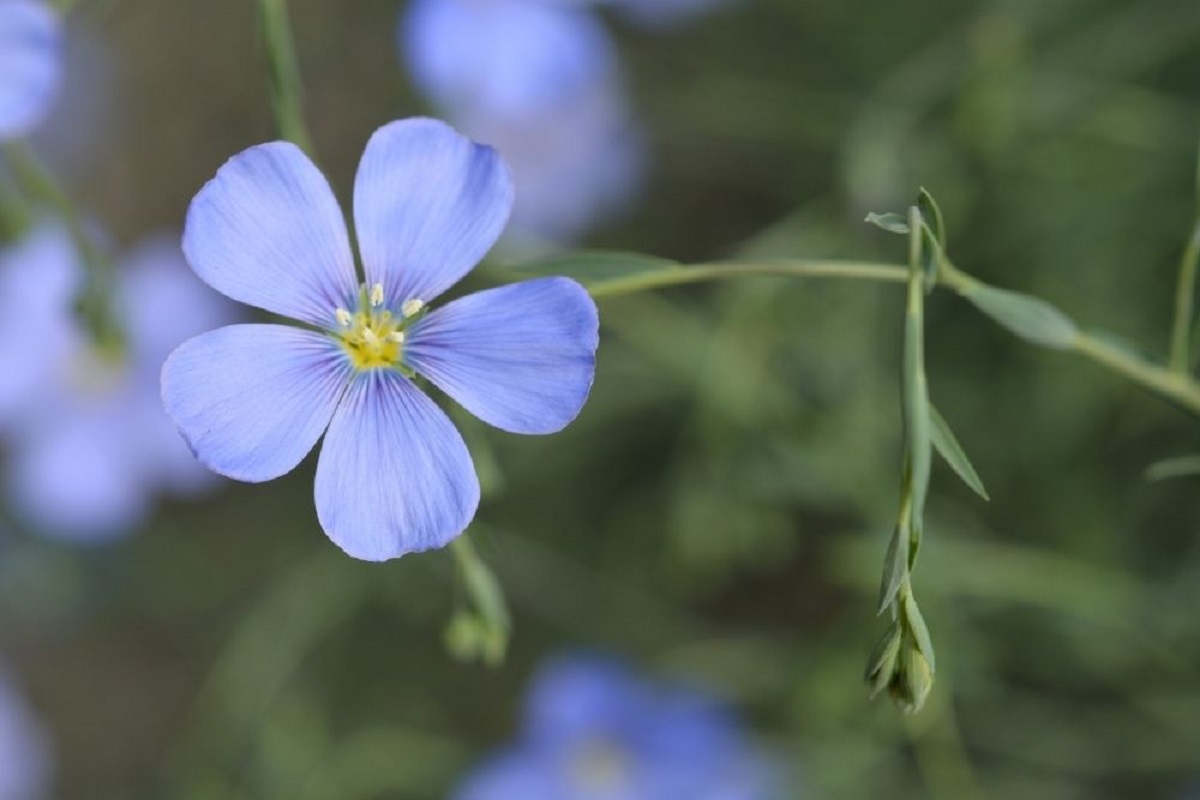
The blue color tends to be paler compared to other vibrant flax flowers.
The alpine flax will bloom from late spring to late summer and are known for their hardiness. These flowers are resistant to drought, deer, and rabbits. Plus, they attract typical pollinators like bees, butterflies, wasps, and more.
Golden Flax (Linum Flavum)
Also known as the yellow flax plant, the golden flax is a flowering plant native to central and southern Europe. These are fairly compact perennial plants that grow up to 12 inches tall and 8 inches wide.

The woody structure and dark green foliage only work to make the bright yellow flax flowers pop, making this a great addition to a flower bed or hanging basket.
Golden flax flowers thrive in full sun, which adds to the vibrancy of the yellow flowers. It prefers dry soils, making it a good option for rock gardens or alpine gardens.
RELATED: Golden Leaves? 5 Reasons Why Your Majesty Palm Is Changing Color
Scarlet Flax (Linum Grandiflorum)
Also known as the red or crimson flax, the scarlet flax is an Algeria-native flower that has since been introduced in parts of Europe, Northern Africa, and North America.
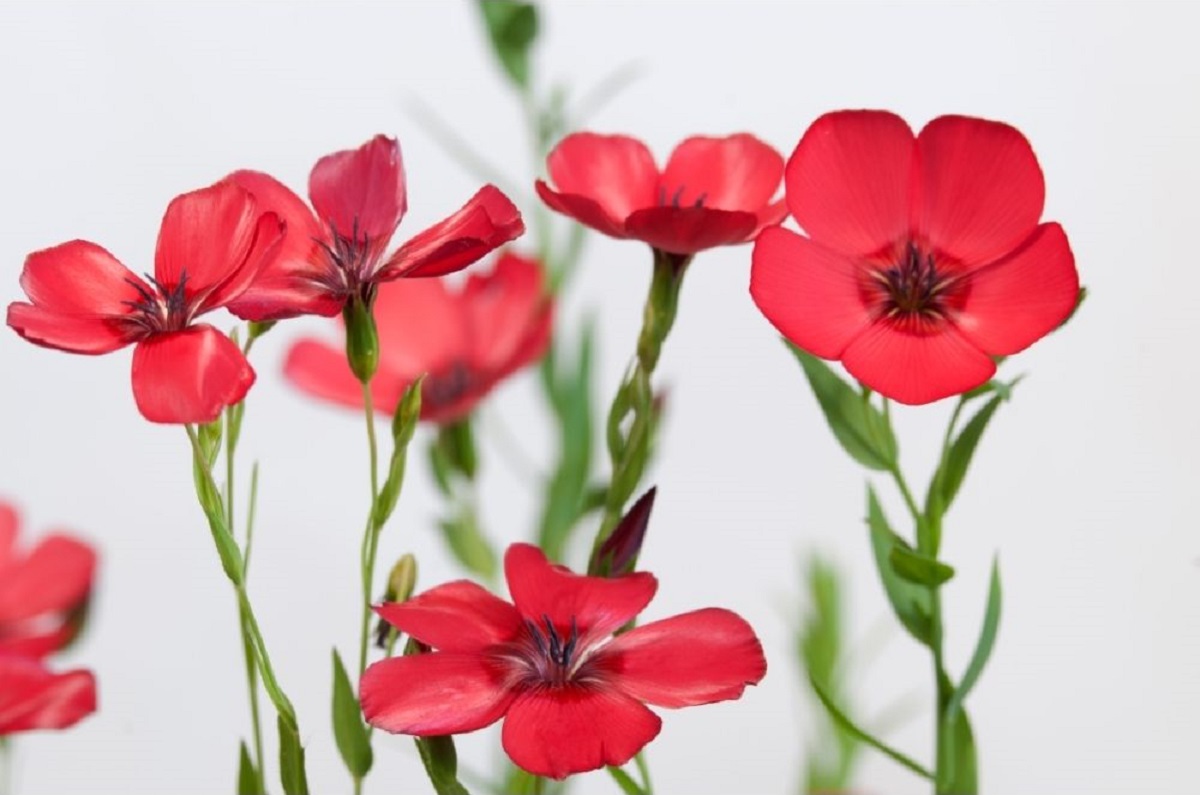
This annual herbaceous plant produces lance-shaped leaves on erect stalks bearing brilliant red five-petaled flowers. They are often mistaken for poppies thanks to the darkened center of the bright red flowers.
Like most other flax flowers, the scarlet flax is a hardy flowering plant that likes to grow in dry, chalky, or sandy soil – as long as it’s well-draining. It will produce its fabulous flowers during summer and into the start of fall.
Flowers That Look Like Flax Flowers
Forget-Me-Nots (Myosotis)
Forget-me-nots are a genus of flowering plants most commonly associated with the common bright blue five-petaled flowers they produce. The structure and color of the flowers closely resemble blue flax flowers, especially with the yellow center.
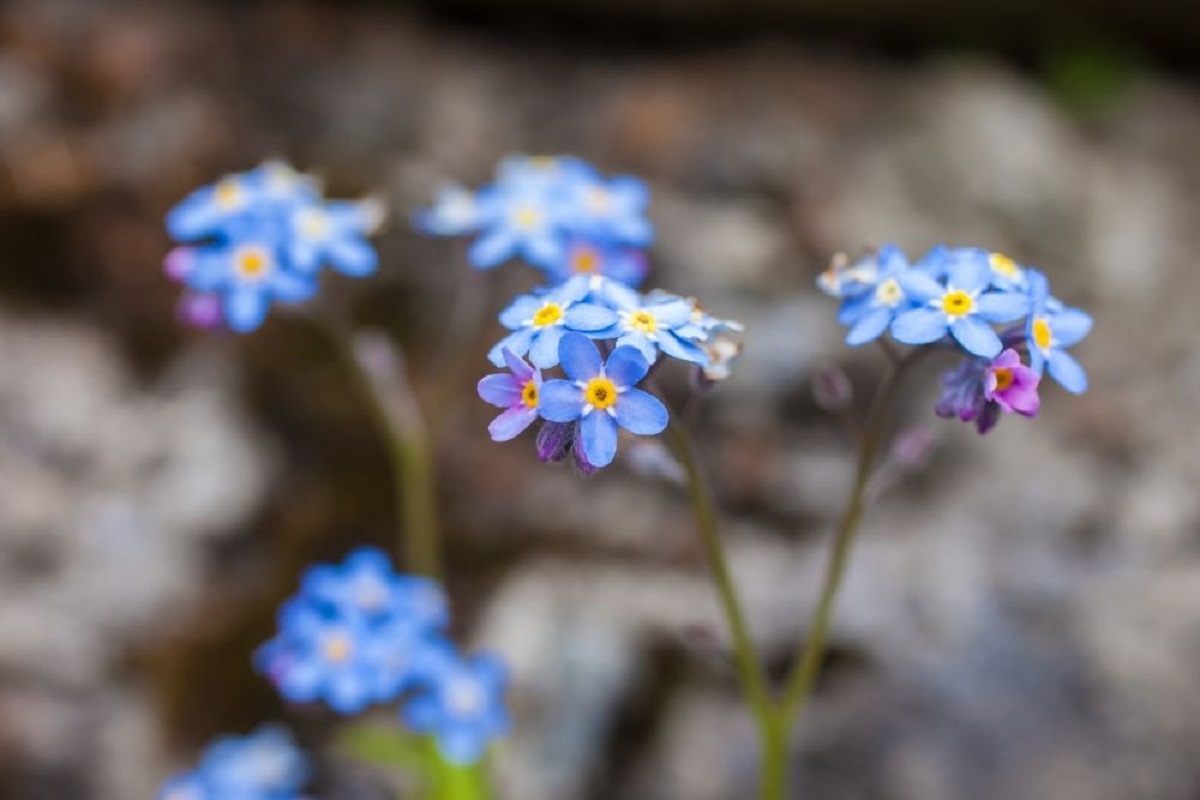
They tend to bloom earlier than flax flowers, however, as forget-me-nots are a sign of spring.
Forget-me-nots are notorious fast-growers, which is why they are often an invasive species and therefore grown in flower pots. Like blue flax flowers, these are very easy flowers to grow and maintain.
Baby Blue Eyes (Nemophila Menziesii)
Native to western North America, baby blue eyes are a beloved annual herb known for their delicate bright and light blue flowers. Like blue flax flowers, these species share the same coloration and five-petaled structure – although baby blue eyes flowers feature a white center rather than a yellow one.
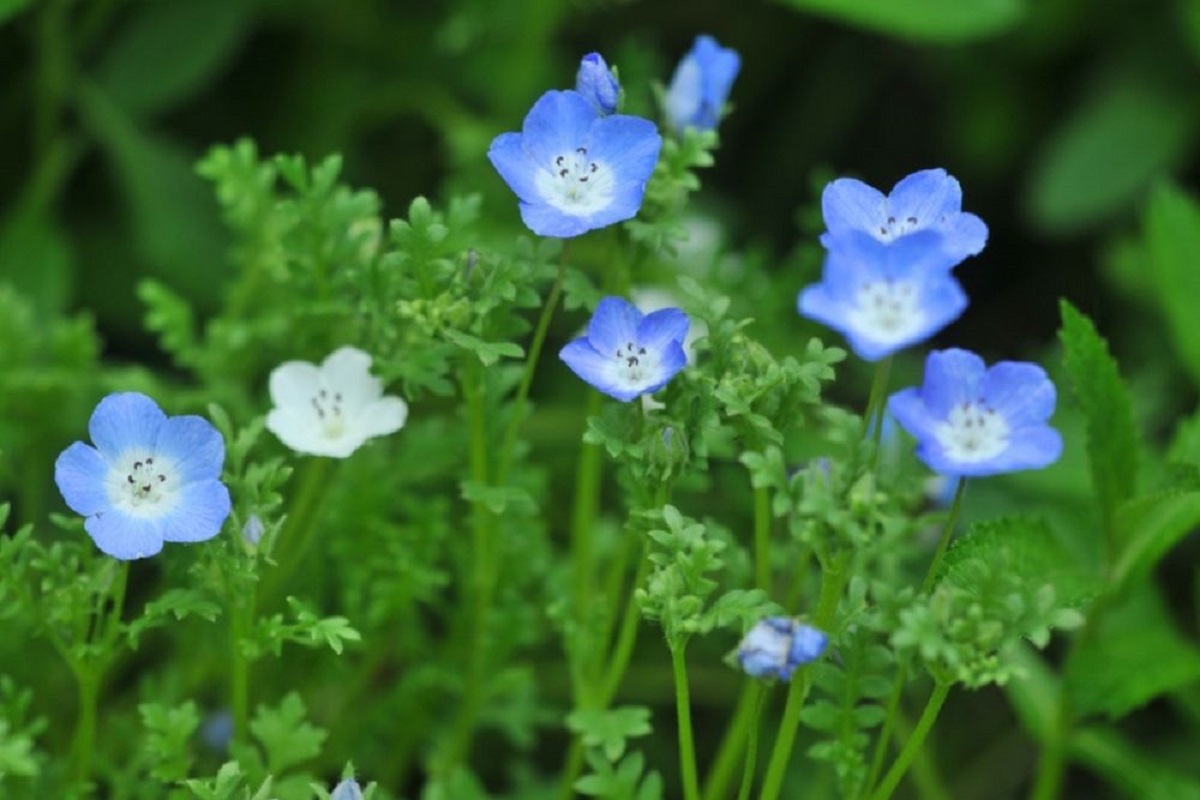
Baby blue eyes flowers are easy to grow and maintain. They typically prefer partial shade in the heat of summer to prevent the petals from burning, but they are otherwise hardy thanks to their drought resilience.
Periwinkles
Periwinkles are another five-petaled flower that can often resemble a flax flower. As there are several variations of periwinkles, you’ll need to find an appropriate variety to match the appearance of your chosen flax flower.
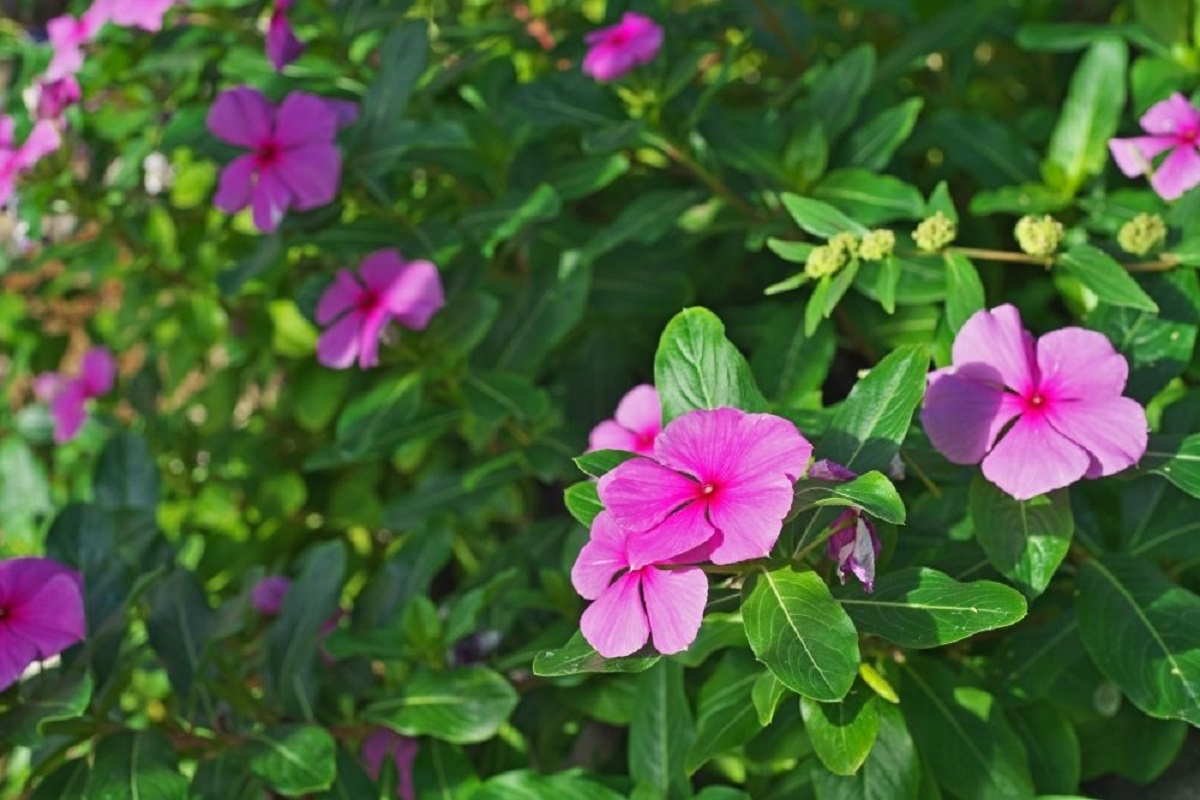
Greater periwinkles (vinca major) are the best for resembling blue flax flowers, but there are also red varieties that look like scarlet flax flowers.
Periwinkle flowers are straight-forward to grow and maintain, but they are fast-growers that can quickly become invasive when not pruned. Still, they make for a lovely addition to a flower bed or hanging basket.
Stiff Blue-Eyed Grass (Sisyrinchium)
Contrary to popular belief, stiff blue-eyed grasses aren’t actually grasses. This genus, instead, consists of tall flowers that are native to the New World. Each flower consists of five petals that, as the name suggests, exhibit a soft blue color. The yellow center also makes this flower look similar to a blue flax.
Stiff blue-eyed grasses are easy to grow and maintain thanks to their ability to adapt to various soils and environments. They typically prefer to be planted in full sunlight and well-drained soil.
Violets (Viola)
Violets are another popular flower in gardens and floral arrangements for their delicate beauty, not to mention the fact that they are edible, which is why they often appear in salads.
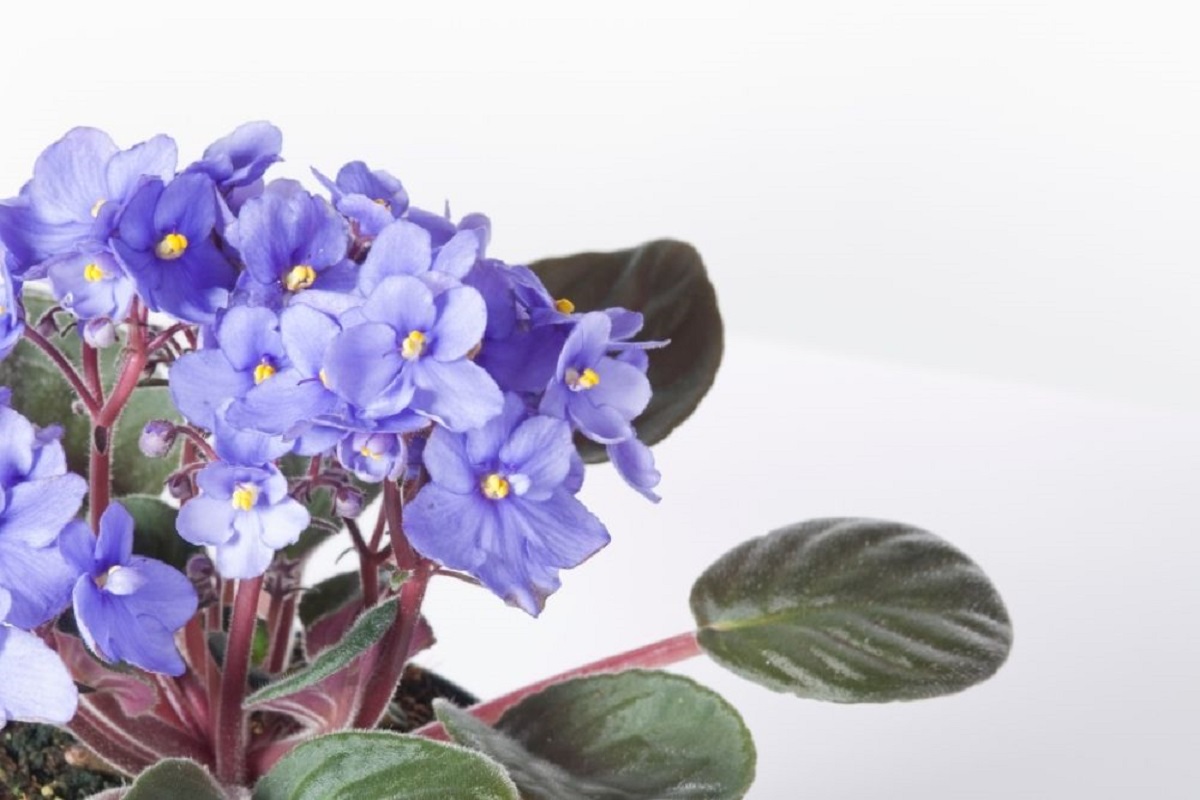
They share a similar appearance to a blue flax flower thanks to their round petals, making for a circular-shaped flower. The violet-blue coloring and yellow center is also reminiscent of blue flax flowers.
Violets are hardy flowers, but unlike flax flowers, they prefer moist and well-drained soil compared to dry environments. Still, one can plant this at any time during the year.
Conclusion
Contrary to popular belief, there is more than one flax flower in the world! Flax flowers are highly beneficial crops for multiple reasons, but if you simply want to plant some of these simple flowers in your garden, they make for a beautiful addition to a rock garden or border.
Alternatively, there are plenty of flowers that look like flax flowers thanks to similar shapes and maintenance requirements!







